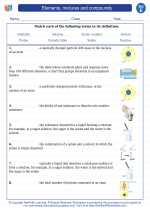Elements
An element is a substance that is made up of only one type of atom. It cannot be broken down into simpler substances by chemical means. Each element is represented by a unique chemical symbol, such as H for hydrogen, O for oxygen, and Na for sodium.
Key characteristics of elements:
- Consist of only one type of atom
- Cannot be broken down into simpler substances
- Have unique chemical symbols
Mixtures
A mixture is a combination of two or more substances that are not chemically combined. The substances in a mixture retain their individual properties and can be separated by physical means, such as filtration or evaporation. Mixtures can be homogeneous (uniform composition) or heterogeneous (non-uniform composition).
Key characteristics of mixtures:
- Composed of two or more substances
- Substances retain their individual properties
- Can be separated by physical means
- Can be homogeneous or heterogeneous
Compounds
A compound is a substance that is made up of two or more different types of atoms chemically bonded together in a fixed ratio. Compounds have unique properties that are different from the elements that make them up. They can only be separated into their constituent elements by chemical means.
Key characteristics of compounds:
- Consist of two or more different types of atoms
- Chemically bonded in a fixed ratio
- Have unique properties different from their constituent elements
- Can only be separated by chemical means
Study Guide
Here are some key points to remember when studying elements, mixtures, and compounds:
- An element is a pure substance made up of only one type of atom.
- A mixture is a combination of two or more substances that are not chemically combined.
- A compound is a substance made up of two or more different types of atoms chemically bonded together.
- Elements are represented by unique chemical symbols, while mixtures and compounds are represented by chemical formulas.
- Mixtures can be separated by physical means, while compounds can only be separated by chemical means.
- Compounds have properties that are different from the elements that make them up.
Understanding the differences between elements, mixtures, and compounds is important in chemistry and lays the foundation for further study of matter and its interactions.
.◂Science Worksheets and Study Guides Fifth Grade. Elements, mixtures and compounds
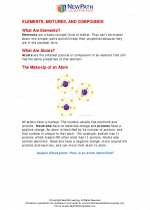
 Activity Lesson
Activity Lesson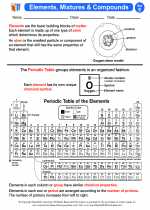
 Worksheet/Answer key
Worksheet/Answer key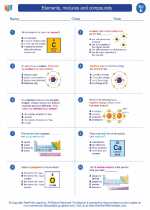
 Worksheet/Answer key
Worksheet/Answer key
 Worksheet/Answer key
Worksheet/Answer key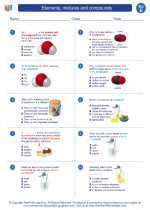
 Worksheet/Answer key
Worksheet/Answer key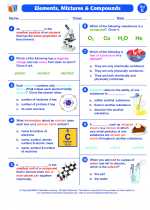
 Vocabulary/Answer key
Vocabulary/Answer key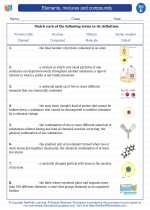
 Vocabulary/Answer key
Vocabulary/Answer key